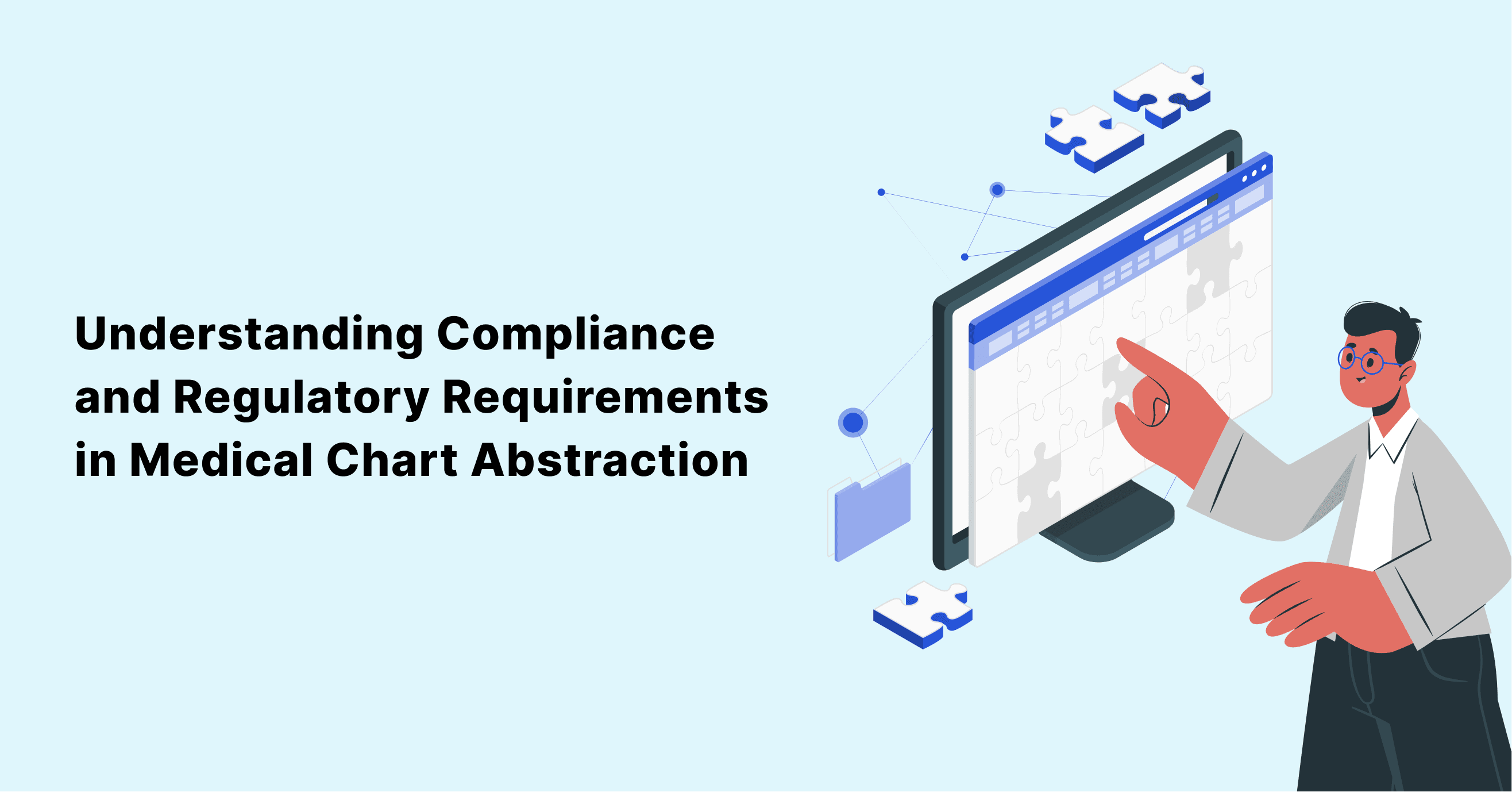
Understanding Compliance and Regulatory Requirements in Medical Chart Abstraction
If you are working in the healthcare industry, understanding and adhering to relevant rules and regulations is …

Medical charts are an integral part of any hospital setting. They provide an efficient way to store and track important medical information, such as past medial history and diagnoses, about a patient’s care. As such, it is essential that accurate chart abstraction practices be implemented in order to ensure correct data entry into the system for optimized patient care delivery. But what exactly does chart abstraction entail?
In this blog post, we’ll discuss best practices for medical chart abstraction in hospital settings and outline steps health professionals can follow to ensure accuracy when dealing with these vital documents. Read on to learn more!
Explore:
Medical chart abstraction is the process of reviewing medical records and extracting important data for analysis and research purposes. This method has been used for decades as a way to gather important information that can help healthcare providers and researchers gain insights into patient care.
During the abstraction process, medical professionals review various types of data within a patient’s record, such as demographics, diagnosis codes, and treatment plans. This information can then be used to identify trends, monitor outcomes, and develop best practices. The importance of accurate medical chart abstraction cannot be overstated, as this process is key to improving patient care and advancing medical research.
When it comes to abstracting charts, there are several feature-specific considerations that can be taken into account to improve efficiency. Some of the most important considerations include:
When it comes to medical chart abstracting, accuracy is crucial to ensure proper patient care and efficient healthcare operations. Here are some effective strategies for minimizing errors and misinterpretations during the process:
Streamlining medical chart abstraction is essential for efficient and accurate healthcare operations. There are several systems and technologies available that can streamline medical chart abstraction processes. Here are a few examples:
It should be noted that the selection of specific systems and technologies should be based on the unique needs and requirements of the healthcare organization. Therefore, it is always a good idea to consult with IT professionals, vendors, and experts in the field to assess which tools and solutions align best with the organization’s objectives and workflows.
Dealing with ambiguous documentation in medical charts can be frustrating for healthcare professionals. However, it is important to approach these situations with a clear head and a plan of action. Some of the most important steps to take when dealing with ambiguous documentation in medical charts include:
Remember, ensuring accurate interpretation of ambiguous documentation is essential for providing optimal patient care. Effective communication, collaboration, and utilizing available resources are key to navigating ambiguity in medical charts.
Medical chart abstraction is a crucial process that requires accuracy and attention to detail. However, there are several common pitfalls associated with medical chart abstraction that can impact the accuracy and reliability of the data extracted. Some of the most common pitfalls that should be avoided during the medical chart abstraction process include:
To mitigate the pitfalls associated with medical chart abstraction, several strategies can be implemented. Firstly, clear and comprehensive guidelines should be established, outlining standardized procedures for data entry, coding conventions, and abstraction protocols. This ensures consistency and reduces the risk of incomplete or inaccurate data entry. Secondly, providing adequate training to abstraction professionals is crucial, including education on privacy regulations and HIPAA guidelines to maintain patient privacy and confidentiality. Thirdly, implementing regular quality assurance checks and inter-rater reliability assessments can help identify and address inconsistencies and errors in the abstraction process. This ensures the accuracy and reliability of the abstracted data. Additionally, creating a supportive environment for abstractors, where they can seek clarification and discuss challenging cases, can help reduce the chances of overlooking relevant information. Lastly, promoting a culture of continuous improvement and learning, such as providing feedback loops and encouraging ongoing professional development, can contribute to the overall quality of medical chart abstraction.
Despite the challenges that medical chart abstraction processes present in hospital settings, they remain an integral part of information gathering and accurate documentation. It is essential to ensure that all the appropriate policies, procedures, and personnel are in place before embarking on a medical chart abstraction process. In addition, remember to consider the rigor of verifying accuracy, version control of documents, and security compliance associated with medical record keeping systems. Ultimately, having an understanding of best practices for medical chart abstractions can make a significant difference in improving organization efficiency within hospital settings. Therefore, it is important to be cognizant of them when implementing new protocols or directories for your healthcare facility.
In conclusion, efficient medical chart abstraction processes depend heavily upon the personnel involved on both ends: from support staff and front-line clinicians alike. To maximize success (and patient care), be proactive and gather your team early on for brainstorming sessions regarding potential challenges and creative solutions—these conversations will provide invaluable insight into developing an effective system for long-term sustainability.
Join over 3,200 subscribers and keep up-to-date with the latest innovations & best practices in Healthcare IT.

If you are working in the healthcare industry, understanding and adhering to relevant rules and regulations is …

We realize that it’s a bold statement to use the word should, but our team has worked with many hospitals to …